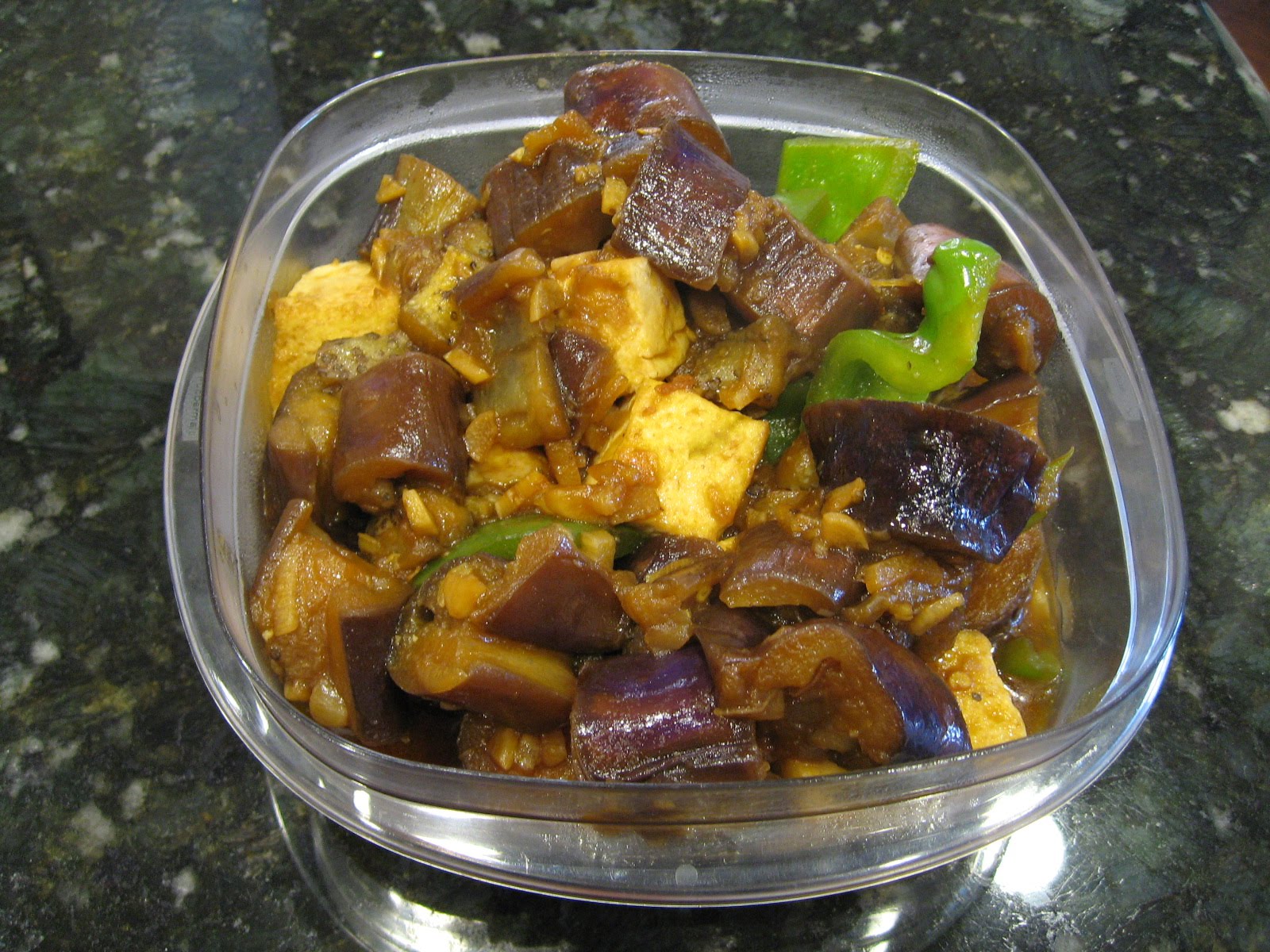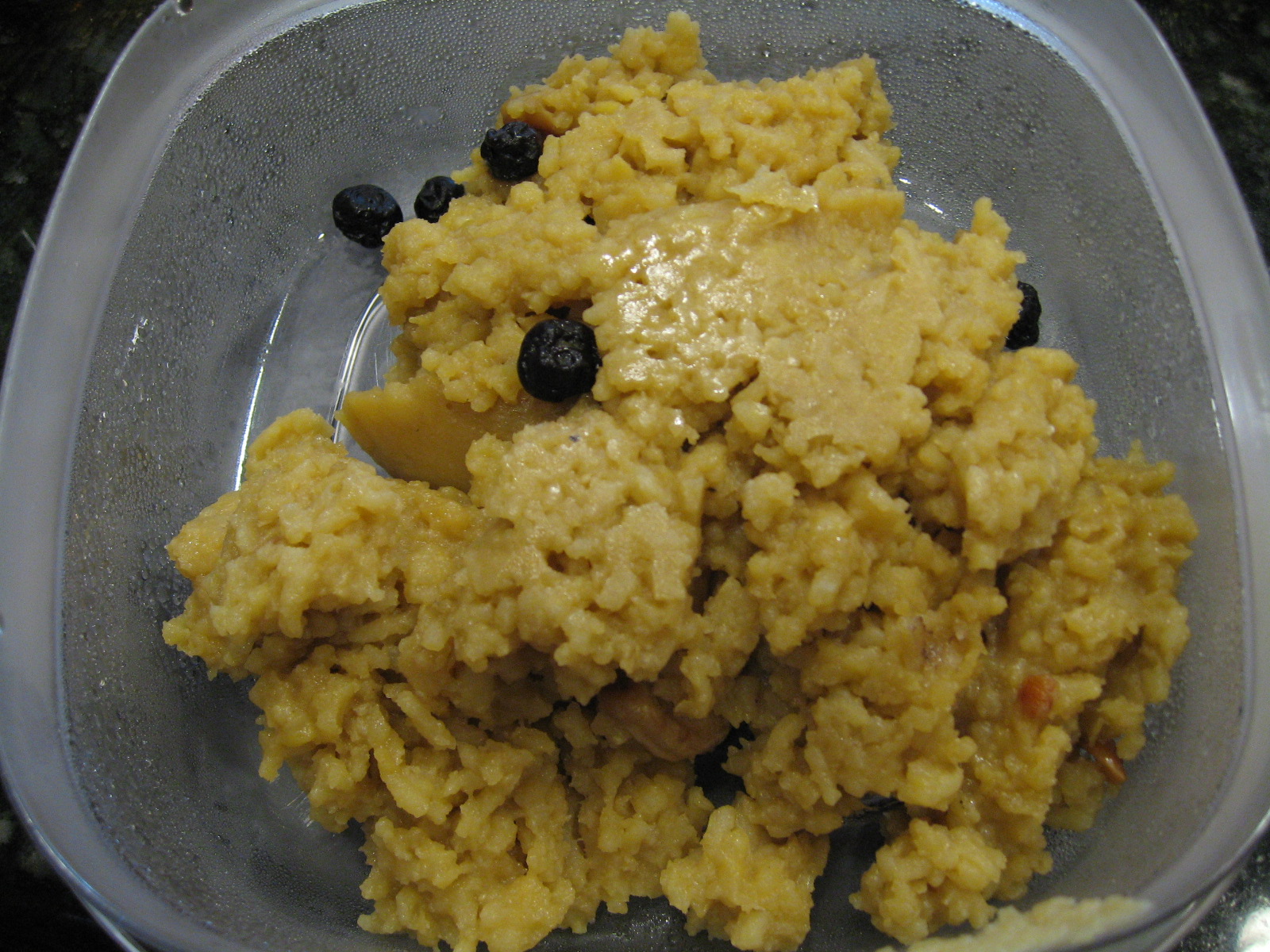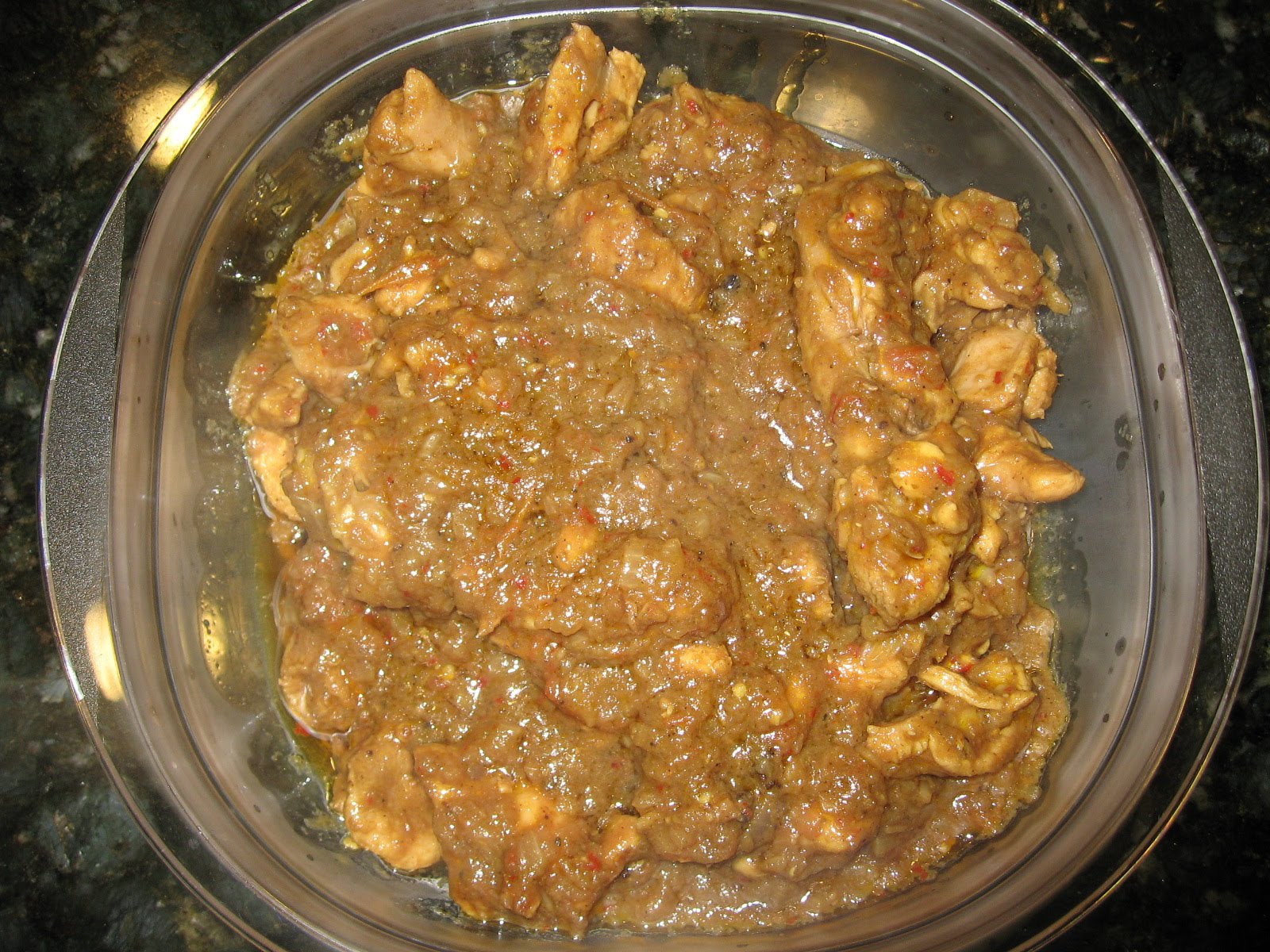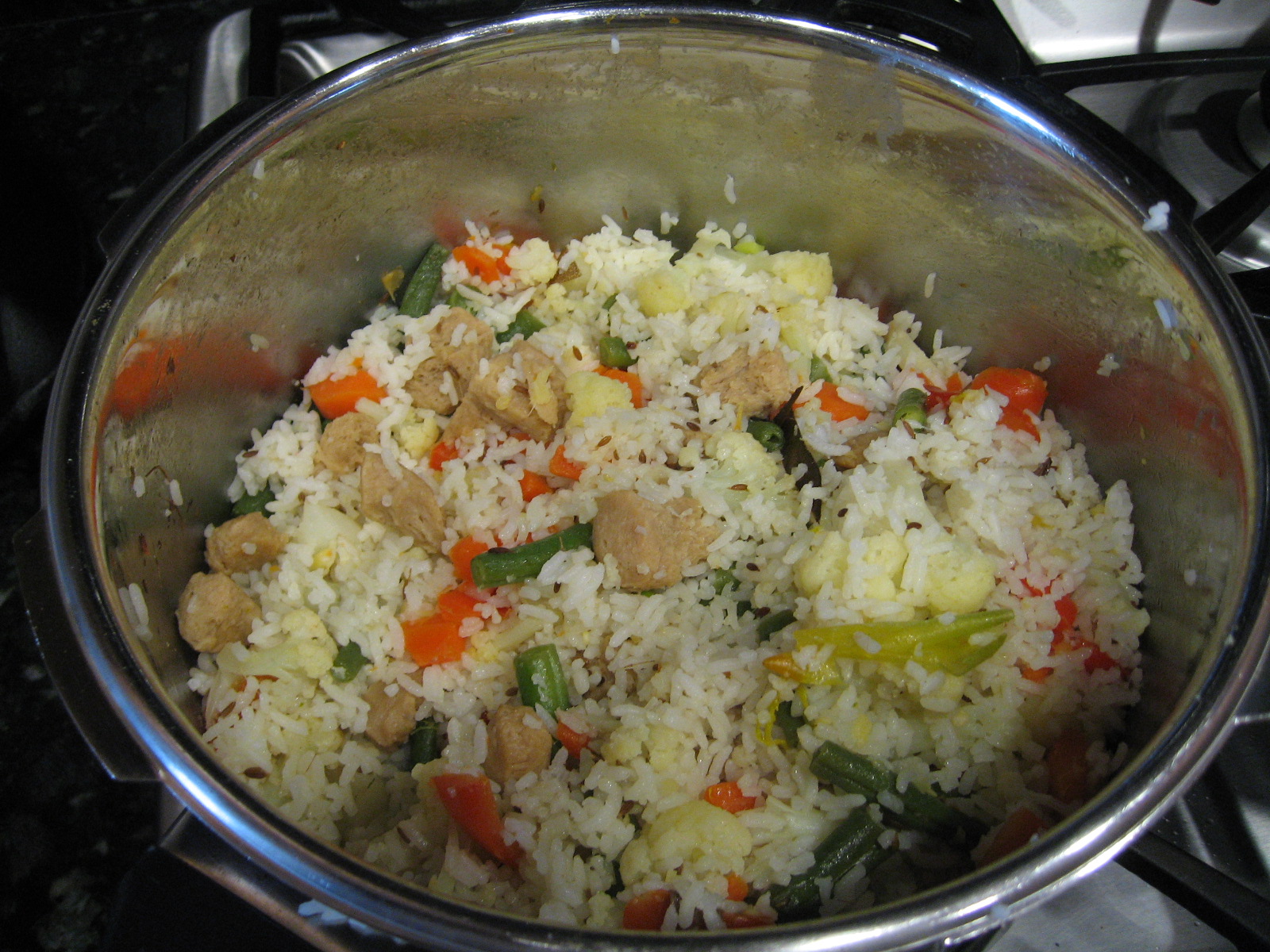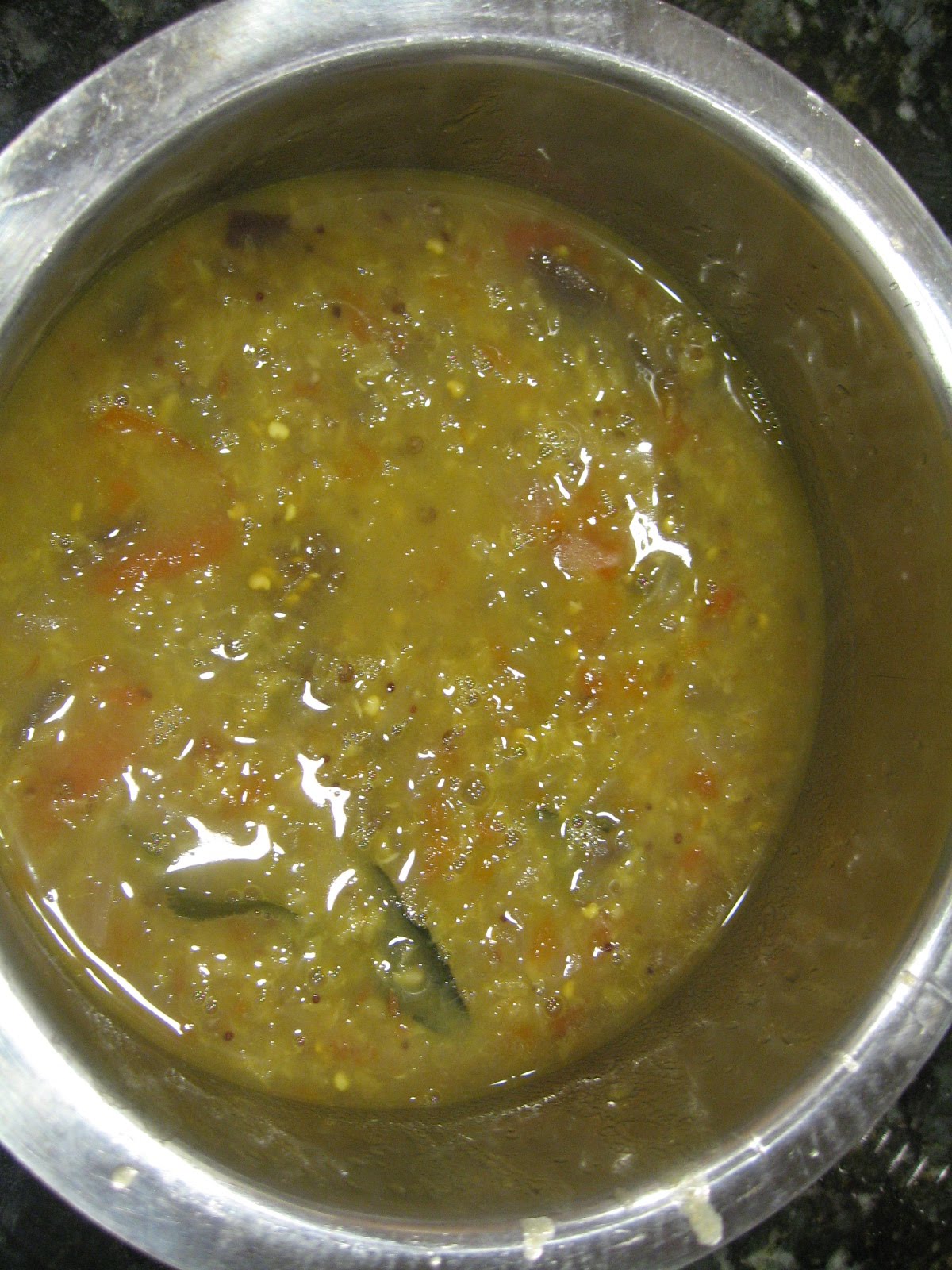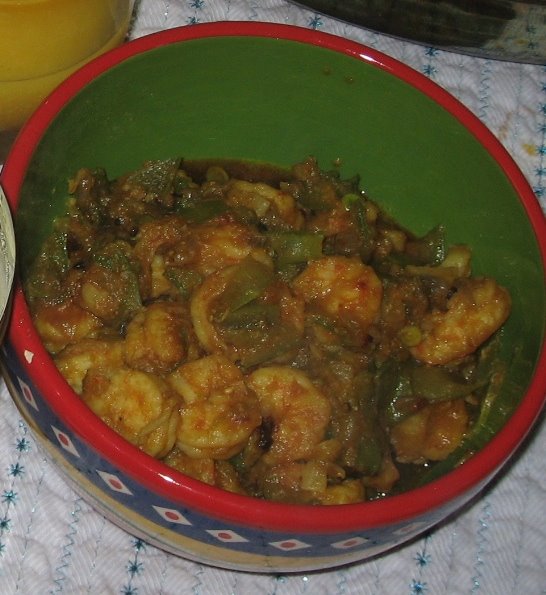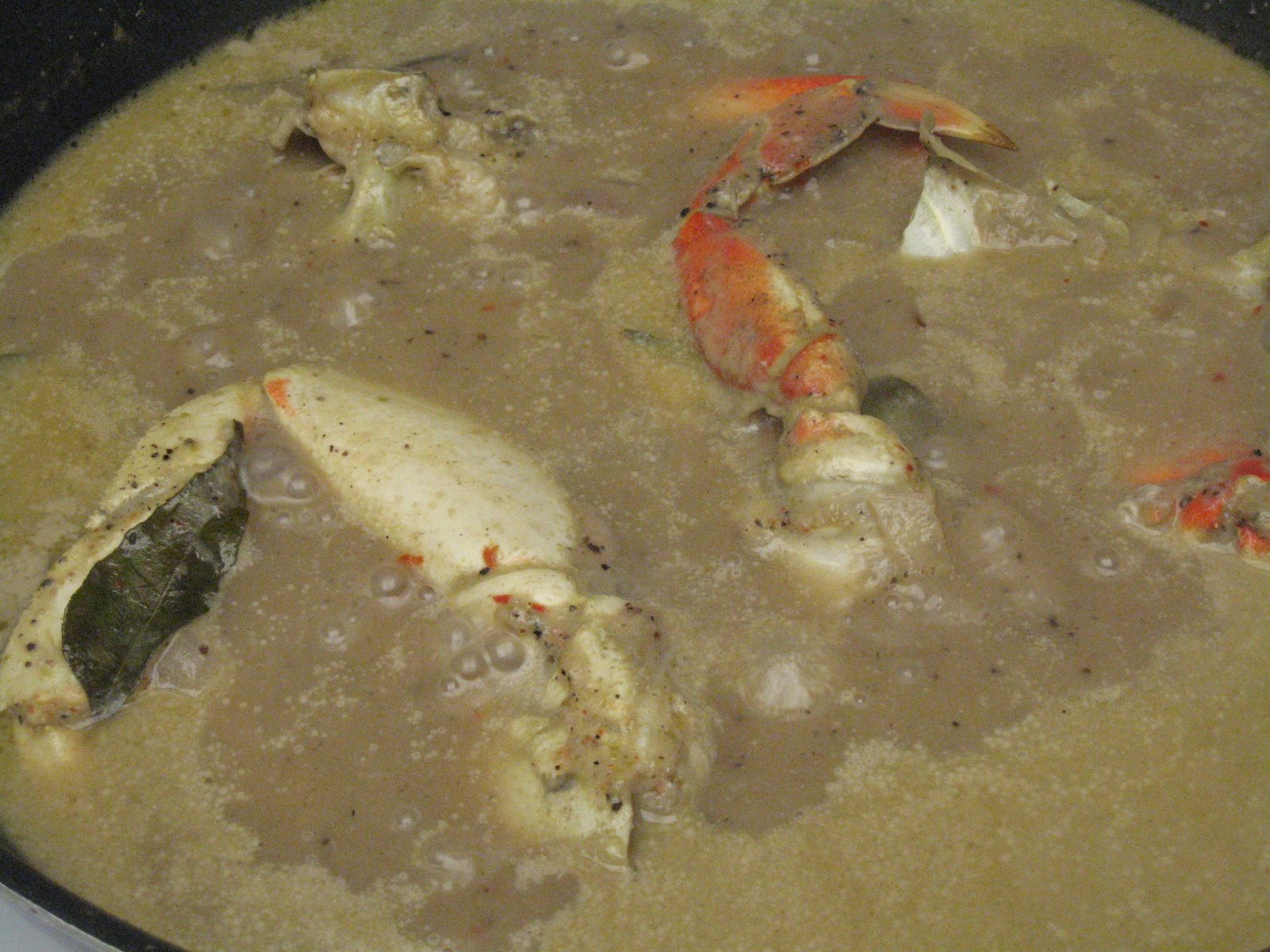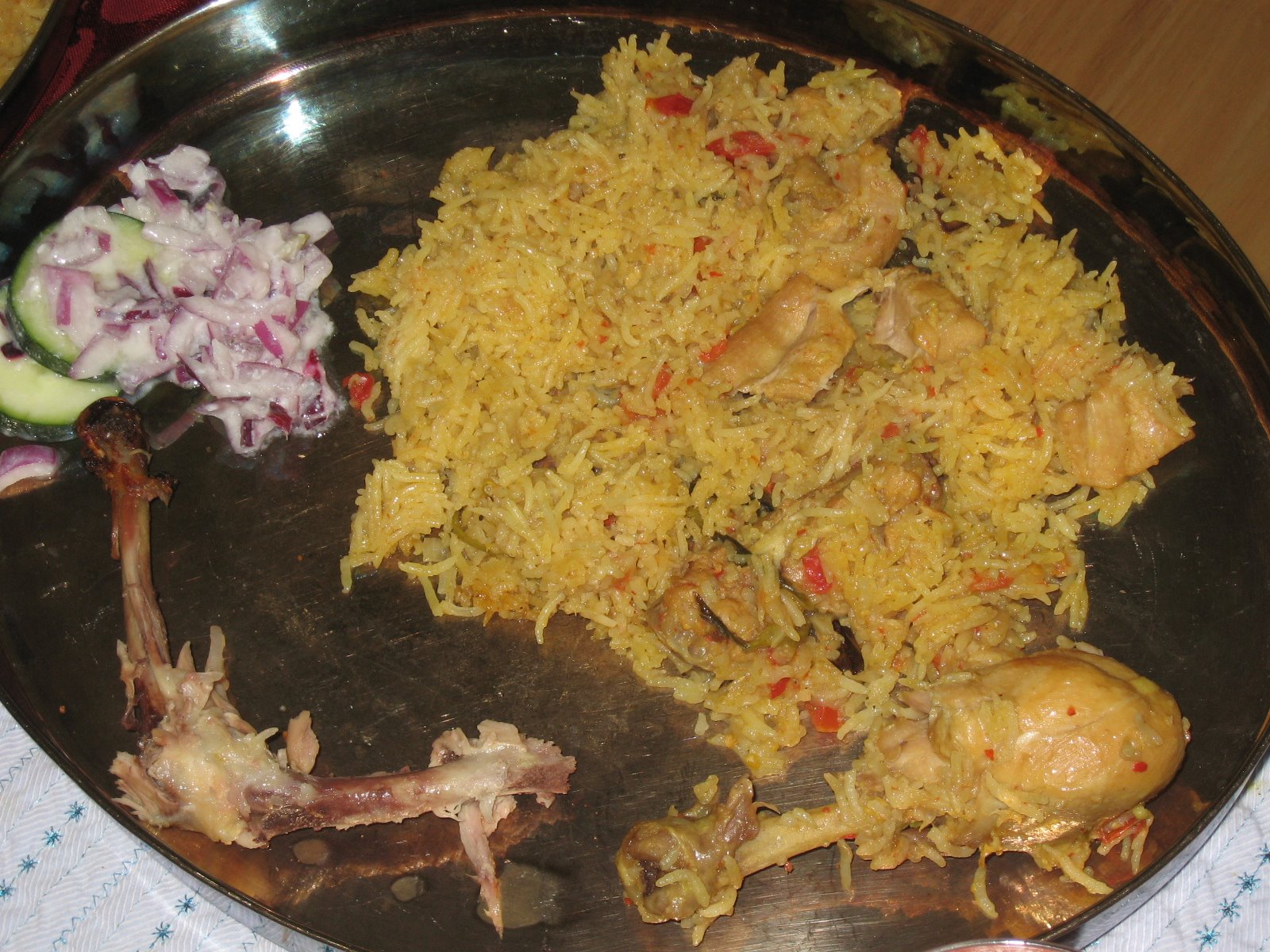How to Grow Garlic at Home
---------------------------------------
Garlic is grown from the individual cloves. Each clove will produce one plant with a single bulb - which may in turn contain up to twenty cloves. When planting garlic, choose a garden site that gets plenty of sun and where the soil is not too damp. The cloves should be planted individually, upright and about an inch (25 mm) under the surface. Plant the cloves about 4 inches (100 mm) apart. Rows should be about 18 inches (450 mm) apart.
garlic can protect other plants growing nearby against many ailments
Harvesting Garlic
-----------------------------
As garlic reaches maturity, the leaves will brown then die away. This is the cue that it is time to harvest your garlic crop. If you harvest too early the cloves will be very small, too late and the bulb will have split.Proper handling of garlic after it's been picked is almost as important as looking after it whilst it's growing. It's essential that garlic is dried properly, otherwise it will rot. The bulbs are often hung up in a cool, dry place. After a week or so, take them down and brush the dirt off gently - don't wash the bulbs at this stage.
Wednesday, July 1, 2009
Saturday, June 27, 2009
Make your own rooting hormone
To make rooting hormone soak the yellow-tipped shoots of a weeping willow tree in water. A tea made from the bark of a willow tree is also effective. When using the shoots or bark soak them for 24 hours prior to using.
1) Gather a handful of willow twigs. Fresh branches work best so avoid fallen and dead twigs. All varieties of willow contain indolebutyric acid which is the active ingredient needed in a rooting hormone. This acid acts to reduce the plant cuttings ability to stop growth at the place of the wound (where you cut the leaf or stem).
2) Cut the willow stems into pieces about two to four inches long. You will want about 1 cups of clippings to make one half gallon of rooting hormone.
3) In a large container pour boiling water over the clippings and allow the mixture to steep overnight.
4) Store the rooting hormone in the refrigerator in a sealed container. The mixture will be viable for up to two months.
Some people have found that using honey makes an effective rooting hormone as well.
1) Gather a handful of willow twigs. Fresh branches work best so avoid fallen and dead twigs. All varieties of willow contain indolebutyric acid which is the active ingredient needed in a rooting hormone. This acid acts to reduce the plant cuttings ability to stop growth at the place of the wound (where you cut the leaf or stem).
2) Cut the willow stems into pieces about two to four inches long. You will want about 1 cups of clippings to make one half gallon of rooting hormone.
3) In a large container pour boiling water over the clippings and allow the mixture to steep overnight.
4) Store the rooting hormone in the refrigerator in a sealed container. The mixture will be viable for up to two months.
Some people have found that using honey makes an effective rooting hormone as well.
How to grow hibiscus from stem cuttings

The first step in starting a new hibiscus from cuttings is to take the cuttings from new growth in the spring or summer months. Use a pair of gardening scissors to gently cut a small piece of the new growth, about the length of a pencil. Leave only 2-3 leaves at the top of the cutting and remove any remaining leaves. Note: It is best to take several cuttings, as the hibiscus starts tend to do better when several are planted together.
Next, cut slits in a couple of the nodes near the bottom of the cutting. The nodes are the small bulges protruding from the stem. The new roots will emerge from the nodes you slit.

Now you will want to dip the nodes in a rooting compound, which can be purchased at your local nursery or gardening center. You may choose to make your own homemade rooting compound.
After you have dipped the nodes into the rooting compound, place the cuttings in a large pot that is filled with a growing medium. Perlite works very well for rooting the hibiscus, but as long as your growing medium is moist and well-drained, it should work nicely. Again, group together several cuttings in the pot for the best rooting growth.
Once you have placed your cuttings in the pot, place the pot in a water-filled tray. Be sure that the water is deep enough to cover the pot's drainage holes. This will allow the cuttings to soak up moisture from the bottom and ensure that the growing medium stays moist. Mist the cuttings often.
Keep the pot in partial sun and in temperatures ranging from 70 to 85 degrees. In about 6-8 weeks, your cuttings should root. Allow the rooted cuttings to become strong and established before transplanting them.
Next, cut slits in a couple of the nodes near the bottom of the cutting. The nodes are the small bulges protruding from the stem. The new roots will emerge from the nodes you slit.

Now you will want to dip the nodes in a rooting compound, which can be purchased at your local nursery or gardening center. You may choose to make your own homemade rooting compound.
After you have dipped the nodes into the rooting compound, place the cuttings in a large pot that is filled with a growing medium. Perlite works very well for rooting the hibiscus, but as long as your growing medium is moist and well-drained, it should work nicely. Again, group together several cuttings in the pot for the best rooting growth.
Once you have placed your cuttings in the pot, place the pot in a water-filled tray. Be sure that the water is deep enough to cover the pot's drainage holes. This will allow the cuttings to soak up moisture from the bottom and ensure that the growing medium stays moist. Mist the cuttings often.
Keep the pot in partial sun and in temperatures ranging from 70 to 85 degrees. In about 6-8 weeks, your cuttings should root. Allow the rooted cuttings to become strong and established before transplanting them.
Categories
hibiscus,
home,
stem cuttings
How to grow roses from Stem cuttings
Here's what you'll need:
- Rose Cuttings

2.Remove all but the top 2 leaflets on the branch, cutting just above the top set of leaves. You need to remove the excess leaves for the same reason we removed the flower in Step #2. They're taking up too much of the plant's energy. However we want the branch to continue to photosynthesize and feed itself until the new roots form, so we need to leave a couple of leaves. A branch from a bush should have full 3-5 leaf leaflets. This is a cut rose and you don't always get full sets of leaves when you buy cut roses, so you have to make do.




- Rose Cuttings
- Pruners
- Rooting Hormone (available in most garden centers)
- Container with Sand or a Soil-less Potting Mix
- Plastic Bag (to cover the container) - Water
1.Remove the flower and leave about a 12" section of stem. The flower is using up all the plant's energy. If you want to encourage rooting, you need to refocus that energy on the plant's survival.

2.Remove all but the top 2 leaflets on the branch, cutting just above the top set of leaves. You need to remove the excess leaves for the same reason we removed the flower in Step #2. They're taking up too much of the plant's energy. However we want the branch to continue to photosynthesize and feed itself until the new roots form, so we need to leave a couple of leaves. A branch from a bush should have full 3-5 leaf leaflets. This is a cut rose and you don't always get full sets of leaves when you buy cut roses, so you have to make do.

3.Make a fresh cut on the bottom of the stem, just below a node (bump) and use your pruners to slice up into the bottom of the stem about 1/4", quartering it.

4.Rooting hormones spur the plant into developing new roots. They are absolutely required, but they do help. To use a rooting hormone, slightly wet the split stem tip and then dip it into the dry rooting hormone. Shake off any excess.

5.Plant the cutting in sand or potting mix. Poke a hole first, in the potting medium, and then insert the stem. Be careful not to rub off all the rooting hormone. Gently pat into place and water well.

6.Cover the cutting loosely, pot and all, with a plastic bag or plastic wrap and keep the soil moist. I like to put a tall stake into the pot, to hold the plastic away from the leaves. If the plastic touches the leaves, they remain wet and can succumb to a fungus disease. Along the same lines, make sure the condensation can escape from the plastic or the stem will rot. Now be patient, keep the soil moist and start checking in a couple of weeks to see if roots are forming. Check by gently tugging on the stem. If there's resistance, there are probably roots.
Categories
grow roses at home,
rooting hormone,
rose,
stem cuttings
Carrot juice

The carrot is one of the most efficient of all cleansing foods. It is also one of the richest sources of beta-carotene out of which the liver synthesises vitamin A. Besides, carrots are rich in potassium, sodium, calcium (and hence are highly alkaline). They also contain traces of iodine and sulphur and a good proportion of almost all of the vitamins. It is one of the best sources of Vitamin B-complex as it contains niacin, pyridoxine, folic acid, biotin and pantothenic acid. The high carbohydrate content of carrots makes them one of the most effective means of changing the intestinal flora from a putrefactive to a non-putrefactive form.
The most important benefit of carrot juice is undoubtedly its strong alkalinity which purifies and revitalises the blood. In the treatment of most diseases the natural way, it is recognised that the acidic condition of the system is a major contributory factor for disease. The central aim of cleansing therapy is that first acidosis must be corrected and the tissues be afforded the correct blood-pH so that they can be in a position to heal themselves. Carrot juice, with its rapid alkalising effect, thus helps in controlling anaemia, liver trouble, acidosis, blood poisoning, circulatory disorders and ulcers. The same alkalising effect is responsible for the cure of a variety of other ailments such as gall stones and gout which can be mitigated by the removal of unwanted uric acid from the blood.
Here are some more benefits of carrot juice:
* Carrots have also been found to contain a plant hormone called tocokinin. This is closely analogous to insulin and has proved to be beneficial for diabetics.
* Rheumatic ailments, which are often a result of poor nutrition, respond well to carrot juice.
* Its diuretic action helps in scanty urination and is a strong food-medicine to prevent nephritis.
* Carrot juice is also an excellent anti-bacterial agent due to its high content of vitamin E. This helps in the treatment of chronic cases of enteritis.
* Certain alternative treatment plans for cancer, especially splenic leukemia, utilise the powerful effect carrot juice has on the blood. The combination of vitamins it contains has also been found to be a working anti-oxidant defense against free radical damage.
* Carrot juice can be used not just for therapeutic purposes, but also for the general toning up of the system. It combats fatigue, builds resistance to infections, and functions as a protector of the nervous system.
* It is also an excellent beauty formula - a natural roug‚ which works from the inside by purifying the blood. Dry and rough skin can be provided with the missing nutrients and pristine complexion can be regained in a matter of weeks.
Since carrot is a seasonal food, it often becomes difficult or unaffordable to buy them in large quantities. Try not to skimp on your budget when it comes to buying the kilos of carrots required for your family. With fewer ailments you shall have fewer doctor's bills. In the long run your healthy complexion, strong teeth, unimpaired vigor and vitality, vigorous mental reactions and your happy smile will more than make up for the few extra rupees you have to spend for buying the off-season fruit.
The most important benefit of carrot juice is undoubtedly its strong alkalinity which purifies and revitalises the blood. In the treatment of most diseases the natural way, it is recognised that the acidic condition of the system is a major contributory factor for disease. The central aim of cleansing therapy is that first acidosis must be corrected and the tissues be afforded the correct blood-pH so that they can be in a position to heal themselves. Carrot juice, with its rapid alkalising effect, thus helps in controlling anaemia, liver trouble, acidosis, blood poisoning, circulatory disorders and ulcers. The same alkalising effect is responsible for the cure of a variety of other ailments such as gall stones and gout which can be mitigated by the removal of unwanted uric acid from the blood.
Here are some more benefits of carrot juice:
* Carrots have also been found to contain a plant hormone called tocokinin. This is closely analogous to insulin and has proved to be beneficial for diabetics.
* Rheumatic ailments, which are often a result of poor nutrition, respond well to carrot juice.
* Its diuretic action helps in scanty urination and is a strong food-medicine to prevent nephritis.
* Carrot juice is also an excellent anti-bacterial agent due to its high content of vitamin E. This helps in the treatment of chronic cases of enteritis.
* Certain alternative treatment plans for cancer, especially splenic leukemia, utilise the powerful effect carrot juice has on the blood. The combination of vitamins it contains has also been found to be a working anti-oxidant defense against free radical damage.
* Carrot juice can be used not just for therapeutic purposes, but also for the general toning up of the system. It combats fatigue, builds resistance to infections, and functions as a protector of the nervous system.
* It is also an excellent beauty formula - a natural roug‚ which works from the inside by purifying the blood. Dry and rough skin can be provided with the missing nutrients and pristine complexion can be regained in a matter of weeks.
Since carrot is a seasonal food, it often becomes difficult or unaffordable to buy them in large quantities. Try not to skimp on your budget when it comes to buying the kilos of carrots required for your family. With fewer ailments you shall have fewer doctor's bills. In the long run your healthy complexion, strong teeth, unimpaired vigor and vitality, vigorous mental reactions and your happy smile will more than make up for the few extra rupees you have to spend for buying the off-season fruit.
Categories
Carrot,
carrot juice
How to make wheatgrass juice
How to make wheatgrass juice? Simple.
Take about 100 gm of wheat grain and plant them in a soil bed contained in a large tray.
Five such assemblies will provide you with a weekly supply of fresh wheatgrass.
Within 7 days the green shoots would have reached a considerable length, and the juice can be extracted by crushing them, adding some water during the grinding process.
Strain the liquid, and consume it right away, ideally on an empty stomach.
Starting with 25 ml/day, gradually increase your intake to 100 ml/day.
You can add a dash of orange or apple juice or lime juice if you find it a little too pungent.
Take about 100 gm of wheat grain and plant them in a soil bed contained in a large tray.
Five such assemblies will provide you with a weekly supply of fresh wheatgrass.
Within 7 days the green shoots would have reached a considerable length, and the juice can be extracted by crushing them, adding some water during the grinding process.
Strain the liquid, and consume it right away, ideally on an empty stomach.
Starting with 25 ml/day, gradually increase your intake to 100 ml/day.
You can add a dash of orange or apple juice or lime juice if you find it a little too pungent.
Categories
wheatgrass
How to grow wheatgrass at home?

Easy Steps on How to Grow WheatgrassWheatgrass is very cheap and again, easy to grow. First, you need to soak the seeds for about half a day (10-12 hours) then drain it for another 10 to 12 hours. When it is completely dry, you can now sprinkle your seeds in almost any type of porous surface. Porous surfaces allow you to grow wheat grass because they enable the roots to attach and hold your wheatgrass to grow upright.
You can also choose to grow it over soil (it does not generally matter whether the soil is poor or not). Keep the seeds wet over indirect sunlight and above 60 Fahrenheit degrees and you will see them grow about 8 inches tall in a matter of 7 to 10 days.
Taking Care of Your Wheatgrass
The general rule for growing wheatgrass is to water them twice daily with a spray bottle or a watering can. This, coupled with maintaining optimum temperature, air circulation and humidity are the two basic maintenance procedures that they need. In about 7 to 10 days when your wheatgrass grows about 7 inches tall, you can start harvesting them.
Many people who lead busy lifestyles find it most convenient to use wheatgrass sprouters. These automatic sprouters allow you the benefit of planting your own wheat grass (or any type of seed, for that matter) with minimum effort. You do not need to worry about light conditions, pests hovering or soil quality. All you need to do is load the seeds and add in the water and harvest in a matter of days. Growing wheatgrass has never been as easy as it is today.
You can also choose to grow it over soil (it does not generally matter whether the soil is poor or not). Keep the seeds wet over indirect sunlight and above 60 Fahrenheit degrees and you will see them grow about 8 inches tall in a matter of 7 to 10 days.
Taking Care of Your Wheatgrass
The general rule for growing wheatgrass is to water them twice daily with a spray bottle or a watering can. This, coupled with maintaining optimum temperature, air circulation and humidity are the two basic maintenance procedures that they need. In about 7 to 10 days when your wheatgrass grows about 7 inches tall, you can start harvesting them.
Many people who lead busy lifestyles find it most convenient to use wheatgrass sprouters. These automatic sprouters allow you the benefit of planting your own wheat grass (or any type of seed, for that matter) with minimum effort. You do not need to worry about light conditions, pests hovering or soil quality. All you need to do is load the seeds and add in the water and harvest in a matter of days. Growing wheatgrass has never been as easy as it is today.
Categories
grow wheatgrass at home
Wheatgrass juice
Wheatgrass juice will provide you with more energy by fulfilling nutritional
deficiencies and by removing wastes that clog your cells, blood, tissues and organs. I firmly
believe that even so called "healthy" people can live their lives at an even higher level of energy
and mental concentration. We have all read the horror stories concerning environmental hazards
that our bodies are subjected to as a result of our highly developed industrial and technical
lifestyles: all forms of pollution (air, water, sound, etc.); chemicals in our food and water; radiation
given out by televisions, computers, and other high-tech machines; and so on. When the body is
subjected to these hazards it loses its balance, resulting in loss of energy, inability to
concentrate, and depression, not to mention other more devastating degenerative conditions. It
has been scientifically shown that wheatgrass juice neutralizes these environmental toxins,
allowing the body to balance itself and operate at maximum efficiency.
FORTY POINTS ABOUT WHEATGRASS AND ITS NUTRITIONAL VALUES
Wheatgrass juice is one of the best sources of living chlorophyll available.
Chlorophyll is the first product of light and, therefore, contains more light energy than any other element.
Wheatgrass juice is a crude chlorophyll and can be taken orally and as a colon implant without toxic side effects.
Chlorophyll is the basis of all plant life.
Wheatgrass is high in oxygen like all green plants that contain chlorophyll. The brain and all body tissues function at an optimal level in a highly-oxygenated environment.
Chlorophyll is anti-bacterial and can be used inside and outside the body as a healer.
Dr. Bernard Jensen says that it only takes minutes to digest wheatgrass juice and uses up very little body energy.
Science has proven that chlorophyll arrests growth and development of unfriendly bacteria
Chlorophyll (wheatgrass) rebuilds the bloodstream. Studies of various animals have shown chlorophyll to be free of any toxic reaction. The red cell count was returned to normal within 4 to 5 days of the administration of chlorophyll, even in those animals which were known to be extremely anaemic or low in red cell count.
Farmers in the Midwest who have sterile cows and bulls put them on wheatgrass to restore fertility. (The high magnesium content in chlorophyll builds enzymes that restore the sex hormones).
Chlorophyll can be extracted from many plants, but wheatgrass is superior because it has been found to have over 100 elements needed by man. If grown in organic soil, it absorbs 92 of the known 102 minerals from the soil.
Wheatgrass has what is called the grass-juice factor, which has been shown to keep herbivorous animals alive far longer than would be expected.
Dr. Ann Wigmore has been helping people get well from chronic disorders for 30 years using wheatgrass.
Liquid chlorophyll gets into the tissues, refines them and makes them over.
Wheatgrass juice is a superior detoxification agent compared to carrot juice and other fruits and vegetables. Dr. Earp-Thomas, associate of Ann Wigmore, says that 15 pounds of wheatgrass is the equivalent of 350 pounds of carrot, lettuce, celery and so forth.
Liquid chlorophyll washes drug deposits from the body.
Chlorophyll neutralises toxins in the body.
Chlorophyll helps purify the liver.
Chlorophyll improves blood sugar problems.
In the American Journal of Surgery, 1940, Benjamin Gruskin, M.D. recommends chlorophyll for its antiseptic benefits. The article suggests the following clinical uses for chlorophyll to clear up foul smelling odours, neutralise strep infections, heal wounds, hasten skin grafting, cure chronic sinusitis, overcome chronic inner-ear inflammation and infection, reduce varicose veins and heal leg ulcers, eliminate impetigo and other scabby eruptions, heal rectal sores, successfully treat inflammation of the uterine cervix, get rid of parasitic vaginal infections, reduce typhoid fever, and cure advanced pyorrhoea in many cases.
Wheatgrass juice heals acne and even removes scars after it has been ingested for seven to eight months. The diet must be improved at the same time.
Wheatgrass juice acts as a detergent in the body and is used as a body deodorant.
A small amount of wheatgrass juice in the human diet prevents tooth decay.
Wheatgrass juice held in the mouth for 5 minutes will eliminate toothaches. It pulls poisons from the gums.
Gargle wheatgrass juice for a sore throat.
Drink wheatgrass juice for skin problems such as eczema or psoriasis.
Wheatgrass juice keeps the hair from greying.
Pyorrhea of the mouth: Lay pulp of wheatgrass soaked in juice on diseased area in mouth or chew wheatgrass, spitting out the pulp.
By taking wheatgrass juice, one may feel a difference in strength, endurance, health and spirituality - and experience a sense of well-being.
Wheatgrass juice improves digestion.
Wheatgrass juice is high in enzymes.
Wheatgrass juicr is an excellent skin cleanser and can be absorbed through the skin for nutrition. Pour green juice over your body in a tub of warm water and soak for 15-20 minutes, rinse with cold water.
Wheatgrass implants (enemas) are great for healing and detoxifying the colon walls. The implants also heal and cleanse the internal organs. After an enema, wait 20 minutes then implant 4 ounces of wheatgrass juice. Retain for 20 minutes.
Wheatgrass juice is great for constipation and keeping the bowels open. It is high in magnesium.
Dr. Birscher, a research scientist, called chlorophyll 'concentrated sunpower'. He believes that chlorophyll increases the function of the heart, affects the vascular system, the intestines, the uterus and the lungs.
According to Dr. Birscher, nature uses chlorophyll (wheatgrass) as a body cleanser, re-builder and neutraliser of toxins.
Wheatgrass juice can dissolve the scars that are formed in the lungs from breathing acid gasses. The effect of carbon monoxide is minimised since chlorophyll increases haemoglobin production.
Wheatgrass juice reduces high blood pressure and enhances the capillaries.
Wheatgrass juice can remove heavy metals from the body.
Wheatgrass juice is great for blood disorders of all kinds.
Recipes to try!
4 carrots, 4 stalks of celery, 4 spinach leaves, 2 apples and 3-4 inch round of wheatgrass - juice all.
2 oranges, 1 banana, 1 avocado (pitted), 1 lime and 3-4 inch round of wheatgrass - juice all.
3 kiwi fruits, 3 apricots, 2 cups of strawberries, 1 cup of pineapple pieces and 3-4 inch round of wheatgrass - juice all.
deficiencies and by removing wastes that clog your cells, blood, tissues and organs. I firmly
believe that even so called "healthy" people can live their lives at an even higher level of energy
and mental concentration. We have all read the horror stories concerning environmental hazards
that our bodies are subjected to as a result of our highly developed industrial and technical
lifestyles: all forms of pollution (air, water, sound, etc.); chemicals in our food and water; radiation
given out by televisions, computers, and other high-tech machines; and so on. When the body is
subjected to these hazards it loses its balance, resulting in loss of energy, inability to
concentrate, and depression, not to mention other more devastating degenerative conditions. It
has been scientifically shown that wheatgrass juice neutralizes these environmental toxins,
allowing the body to balance itself and operate at maximum efficiency.
FORTY POINTS ABOUT WHEATGRASS AND ITS NUTRITIONAL VALUES
Wheatgrass juice is one of the best sources of living chlorophyll available.
Chlorophyll is the first product of light and, therefore, contains more light energy than any other element.
Wheatgrass juice is a crude chlorophyll and can be taken orally and as a colon implant without toxic side effects.
Chlorophyll is the basis of all plant life.
Wheatgrass is high in oxygen like all green plants that contain chlorophyll. The brain and all body tissues function at an optimal level in a highly-oxygenated environment.
Chlorophyll is anti-bacterial and can be used inside and outside the body as a healer.
Dr. Bernard Jensen says that it only takes minutes to digest wheatgrass juice and uses up very little body energy.
Science has proven that chlorophyll arrests growth and development of unfriendly bacteria
Chlorophyll (wheatgrass) rebuilds the bloodstream. Studies of various animals have shown chlorophyll to be free of any toxic reaction. The red cell count was returned to normal within 4 to 5 days of the administration of chlorophyll, even in those animals which were known to be extremely anaemic or low in red cell count.
Farmers in the Midwest who have sterile cows and bulls put them on wheatgrass to restore fertility. (The high magnesium content in chlorophyll builds enzymes that restore the sex hormones).
Chlorophyll can be extracted from many plants, but wheatgrass is superior because it has been found to have over 100 elements needed by man. If grown in organic soil, it absorbs 92 of the known 102 minerals from the soil.
Wheatgrass has what is called the grass-juice factor, which has been shown to keep herbivorous animals alive far longer than would be expected.
Dr. Ann Wigmore has been helping people get well from chronic disorders for 30 years using wheatgrass.
Liquid chlorophyll gets into the tissues, refines them and makes them over.
Wheatgrass juice is a superior detoxification agent compared to carrot juice and other fruits and vegetables. Dr. Earp-Thomas, associate of Ann Wigmore, says that 15 pounds of wheatgrass is the equivalent of 350 pounds of carrot, lettuce, celery and so forth.
Liquid chlorophyll washes drug deposits from the body.
Chlorophyll neutralises toxins in the body.
Chlorophyll helps purify the liver.
Chlorophyll improves blood sugar problems.
In the American Journal of Surgery, 1940, Benjamin Gruskin, M.D. recommends chlorophyll for its antiseptic benefits. The article suggests the following clinical uses for chlorophyll to clear up foul smelling odours, neutralise strep infections, heal wounds, hasten skin grafting, cure chronic sinusitis, overcome chronic inner-ear inflammation and infection, reduce varicose veins and heal leg ulcers, eliminate impetigo and other scabby eruptions, heal rectal sores, successfully treat inflammation of the uterine cervix, get rid of parasitic vaginal infections, reduce typhoid fever, and cure advanced pyorrhoea in many cases.
Wheatgrass juice heals acne and even removes scars after it has been ingested for seven to eight months. The diet must be improved at the same time.
Wheatgrass juice acts as a detergent in the body and is used as a body deodorant.
A small amount of wheatgrass juice in the human diet prevents tooth decay.
Wheatgrass juice held in the mouth for 5 minutes will eliminate toothaches. It pulls poisons from the gums.
Gargle wheatgrass juice for a sore throat.
Drink wheatgrass juice for skin problems such as eczema or psoriasis.
Wheatgrass juice keeps the hair from greying.
Pyorrhea of the mouth: Lay pulp of wheatgrass soaked in juice on diseased area in mouth or chew wheatgrass, spitting out the pulp.
By taking wheatgrass juice, one may feel a difference in strength, endurance, health and spirituality - and experience a sense of well-being.
Wheatgrass juice improves digestion.
Wheatgrass juice is high in enzymes.
Wheatgrass juicr is an excellent skin cleanser and can be absorbed through the skin for nutrition. Pour green juice over your body in a tub of warm water and soak for 15-20 minutes, rinse with cold water.
Wheatgrass implants (enemas) are great for healing and detoxifying the colon walls. The implants also heal and cleanse the internal organs. After an enema, wait 20 minutes then implant 4 ounces of wheatgrass juice. Retain for 20 minutes.
Wheatgrass juice is great for constipation and keeping the bowels open. It is high in magnesium.
Dr. Birscher, a research scientist, called chlorophyll 'concentrated sunpower'. He believes that chlorophyll increases the function of the heart, affects the vascular system, the intestines, the uterus and the lungs.
According to Dr. Birscher, nature uses chlorophyll (wheatgrass) as a body cleanser, re-builder and neutraliser of toxins.
Wheatgrass juice can dissolve the scars that are formed in the lungs from breathing acid gasses. The effect of carbon monoxide is minimised since chlorophyll increases haemoglobin production.
Wheatgrass juice reduces high blood pressure and enhances the capillaries.
Wheatgrass juice can remove heavy metals from the body.
Wheatgrass juice is great for blood disorders of all kinds.
Recipes to try!
4 carrots, 4 stalks of celery, 4 spinach leaves, 2 apples and 3-4 inch round of wheatgrass - juice all.
2 oranges, 1 banana, 1 avocado (pitted), 1 lime and 3-4 inch round of wheatgrass - juice all.
3 kiwi fruits, 3 apricots, 2 cups of strawberries, 1 cup of pineapple pieces and 3-4 inch round of wheatgrass - juice all.
Categories
wheatgrass
Tips for Breast Feeding moms
I almost ran out of milk supply due to stress and various reasons. This is what I did in order to boost my milk production.
1. Pumped atleast twice a day. Believe me this is very effective.
2. Had fenugreek and fennel.
3. Please DO NOT eat bitter gourd while lactating as this may reduce blood sugar in the baby which
may lead to coma.
1. Pumped atleast twice a day. Believe me this is very effective.
2. Had fenugreek and fennel.
3. Please DO NOT eat bitter gourd while lactating as this may reduce blood sugar in the baby which
may lead to coma.
Categories
bitter gourd,
breast feeding,
breast pump,
fennel,
fenugreek
Ginger Chicken
Ingredients
=========
chicken
3 chillis green
1 bunch coriander leaves
1 tbsp corn flour
curry leaves
ginger
1 onion
1 tsp pepper
salt
1 tbsp soya sauce
1 tbsp vinegar
Take curry leaves,onion,green chillis make a paste in a blender.
Now take chicken add soya sauce,vinegar,corn flour,salt mix well and keep it a side for 20 min.
Take a pan add oil, add the marniated chicken pieces, fry the chicken till they become goldern brown add ginger chopped,ginger garlic paste, mix well,now add the onion paste mix well cook for 5 min till it stick to chiken add little salt if required, now add pepper powder, finely add coriander leaves.
=========
chicken
3 chillis green
1 bunch coriander leaves
1 tbsp corn flour
curry leaves
ginger
1 onion
1 tsp pepper
salt
1 tbsp soya sauce
1 tbsp vinegar
Take curry leaves,onion,green chillis make a paste in a blender.
Now take chicken add soya sauce,vinegar,corn flour,salt mix well and keep it a side for 20 min.
Take a pan add oil, add the marniated chicken pieces, fry the chicken till they become goldern brown add ginger chopped,ginger garlic paste, mix well,now add the onion paste mix well cook for 5 min till it stick to chiken add little salt if required, now add pepper powder, finely add coriander leaves.
veggie kabab
Ingredients
=========
1 pinch chat masala
1 cup chopped fresh corn
1 small chopped carrot
1 tsp chopped coriander
1 tbsp chopped raisins
2 tbsp crushed cashew
1/2 tsp cummin seeds
1/4 tsp garam masala
2 number green chilli
1/2 lime juice
1 cup paneer
2 plantain
1 pinch red chilli pdr
salt
1.boil green plantain for 20 min , and remove from hat boiling water, if it is left in the water to cool down it will absorb moisture and is not good for kabab
2.chop all other ingredients , vegetables and mix like mixing chapati dough
3.once ready put it on a wodden spoon or sheek and remove and fry or bake in the oven
4.if you bake it in the oven just brush it with butter or else it will become dry
5.always sprinkle little chat masala and lemon juice just before serving and seve with chtney of your choice
=========
1 pinch chat masala
1 cup chopped fresh corn
1 small chopped carrot
1 tsp chopped coriander
1 tbsp chopped raisins
2 tbsp crushed cashew
1/2 tsp cummin seeds
1/4 tsp garam masala
2 number green chilli
1/2 lime juice
1 cup paneer
2 plantain
1 pinch red chilli pdr
salt
1.boil green plantain for 20 min , and remove from hat boiling water, if it is left in the water to cool down it will absorb moisture and is not good for kabab
2.chop all other ingredients , vegetables and mix like mixing chapati dough
3.once ready put it on a wodden spoon or sheek and remove and fry or bake in the oven
4.if you bake it in the oven just brush it with butter or else it will become dry
5.always sprinkle little chat masala and lemon juice just before serving and seve with chtney of your choice
Shrimp in coconut masala fry
Ingredients:
=========
1 & 1/2 tbsp Coconut powder
1 & 1/2 tsp Coriander powder
1 tsp Cumin seeds
2 tsp Curd/Yoghurt
few Curry leaves(chopped)
1 & 1/2 tbsp Ginger garlic paste
few Green Chillies(chopped)
1 tsp Mustard seeds
to fry Oil
1/2 cup Onion
pinch Pepper powder
1/2 tsp Red Chilli powder
few Red chilli(Whole)
2 lbs Shrimp/Prawn
1/4 tsp Turmeric Powder
1. Put oil in a wide open non stick pan.Add red chillies & mustard seeds to it till they crackle.Add cumin seeds ,chopped onion & coconut powder .Saute well . [Note:-Avoid frying onions till they are golden brown]
2. Add green chillies,salt,curry leaves & saute well on medium flame.Add ginger garlic paste ,turmeric powder,coriander powder,curd,red chilli powder & mix well till the mixture dries.
3. Strain excess water & add shrimp to the masala prepared .Mix well & cook slowly till the water from shrimp has oozed out & mixture has dried.
4.Sprinkle pepper powder as seasoning .
5.Garnish it with chopped coriander leaves & lemon juice.
=========
1 & 1/2 tbsp Coconut powder
1 & 1/2 tsp Coriander powder
1 tsp Cumin seeds
2 tsp Curd/Yoghurt
few Curry leaves(chopped)
1 & 1/2 tbsp Ginger garlic paste
few Green Chillies(chopped)
1 tsp Mustard seeds
to fry Oil
1/2 cup Onion
pinch Pepper powder
1/2 tsp Red Chilli powder
few Red chilli(Whole)
2 lbs Shrimp/Prawn
1/4 tsp Turmeric Powder
1. Put oil in a wide open non stick pan.Add red chillies & mustard seeds to it till they crackle.Add cumin seeds ,chopped onion & coconut powder .Saute well . [Note:-Avoid frying onions till they are golden brown]
2. Add green chillies,salt,curry leaves & saute well on medium flame.Add ginger garlic paste ,turmeric powder,coriander powder,curd,red chilli powder & mix well till the mixture dries.
3. Strain excess water & add shrimp to the masala prepared .Mix well & cook slowly till the water from shrimp has oozed out & mixture has dried.
4.Sprinkle pepper powder as seasoning .
5.Garnish it with chopped coriander leaves & lemon juice.
saag
Ingredients :
==========
1/4 bunch celery
1 tsp cumin seeds
1 tbsp garlic & ginger(chopped)
few Green chillies(chopped)
Hing
1/2 bunch mustard greens(chopped)
2 tbsp mustard oil
1 tsp Mustard seeds
Salt
1 bunch spinach(chopped)
few Spring onions(chopped)
1 tsp urad dal(washed)
1.Rinse & chop the greens roughly.
2. In a pan put mustard oil ,when hot add mustard seeds,cumins seeds till they crackle.Add urad dal to it & saute till golden in color.
3. Further to the tempering add chopped ginger & garlic,spring onions ,green chillies,salt & hing ,Mix it well & add all the green vegetables.
4. Reduce the flame and cook them without the lid on .Allow it cook (add little water if the mixture dries out).
5. Once greens are cooked add a pinch of nutmeg powder to enhance its taste.
6. Add chopped onion & lime juice before serving.
==========
1/4 bunch celery
1 tsp cumin seeds
1 tbsp garlic & ginger(chopped)
few Green chillies(chopped)
Hing
1/2 bunch mustard greens(chopped)
2 tbsp mustard oil
1 tsp Mustard seeds
Salt
1 bunch spinach(chopped)
few Spring onions(chopped)
1 tsp urad dal(washed)
1.Rinse & chop the greens roughly.
2. In a pan put mustard oil ,when hot add mustard seeds,cumins seeds till they crackle.Add urad dal to it & saute till golden in color.
3. Further to the tempering add chopped ginger & garlic,spring onions ,green chillies,salt & hing ,Mix it well & add all the green vegetables.
4. Reduce the flame and cook them without the lid on .Allow it cook (add little water if the mixture dries out).
5. Once greens are cooked add a pinch of nutmeg powder to enhance its taste.
6. Add chopped onion & lime juice before serving.
Snakegourd masala
Ingredients:
=============
1/2 cup Chana dal
1 tsp Cumin seeds
few curry leaves(chopped)
few Green chillies
1 tbsp Gun powder
pinch Hing(optional)
1 tsp Mustard seeds
1/2 cup Onion(chopped)
few Red chilli
Salt
1 large Snake Gourd
1/2 tsp Turmeric
1. Slit open the snake gourd & remove the seeds.Cut it into small pieces.
2.Along with this boil chana dal till its partially cooked.After its half-cooked add snake gourd & pinch of salt.Allow it to boil till the gourd is tender & cooked.
3. On the other side,take a non stick pan & put oil in it.When it is hot add red chillies,mustard seeds,cumin seeds & onions.Add turmeric,hing(optional),green chillies,chopped curry leaves & saute all well.
4.Once chana & gourd mixture is 3/4 cooked add it to the tempering in the pan . Toss it till remaining water evaporates.Once it becomes a dry mixture add the gunpowder of your choice . (Note:-Chana dal shouldnot get mashed during the boiling process & any excess of water in the mixture should be strained out before adding to the tempering)
5. Toss the mixture well.Add salt (if required)
6.Serve it with rotis/rice
=============
1/2 cup Chana dal
1 tsp Cumin seeds
few curry leaves(chopped)
few Green chillies
1 tbsp Gun powder
pinch Hing(optional)
1 tsp Mustard seeds
1/2 cup Onion(chopped)
few Red chilli
Salt
1 large Snake Gourd
1/2 tsp Turmeric
1. Slit open the snake gourd & remove the seeds.Cut it into small pieces.
2.Along with this boil chana dal till its partially cooked.After its half-cooked add snake gourd & pinch of salt.Allow it to boil till the gourd is tender & cooked.
3. On the other side,take a non stick pan & put oil in it.When it is hot add red chillies,mustard seeds,cumin seeds & onions.Add turmeric,hing(optional),green chillies,chopped curry leaves & saute all well.
4.Once chana & gourd mixture is 3/4 cooked add it to the tempering in the pan . Toss it till remaining water evaporates.Once it becomes a dry mixture add the gunpowder of your choice . (Note:-Chana dal shouldnot get mashed during the boiling process & any excess of water in the mixture should be strained out before adding to the tempering)
5. Toss the mixture well.Add salt (if required)
6.Serve it with rotis/rice
Categories
peerkangai,
snakegourd
Bharvan Bhendi
Ingredients
========
1 tbsp Amchoor powder
few coriander (chopped)
1 & 1/2 tbsp Gram Flour/Besan/Chickpea flour
1/2 Lime
1 lbs Okra /Bhindi
Salt
4 tbsp Sambhar powder
1/2 Sliced onions
1.Wash & dry tender okra.Cut the head & slit open halfway through okra.
2. For the filling :-In a bowl mix sambhar powder,amchoor pwdr,gram flour,salt , lime juice & few drops of water to make a thick paste. (Note:-Ratio of sambhar pwdr & amchoor pwdr is 4:1 & add less amount of salt in the filling mixture)
3.Stuff mixture in the bhindi & set the nonstick pan on medium heat.
4. Arrange stuffed bhindis on the pan keeping the stuffed part upwards.Add one tbspn of oil on all the bhindis & sprinkle little water.Cover it & let it cook. (Note:- Oil is added to fry slightly the bhindis & water is added to steam them until cooked)
5. At small intervals of 3-4mins continue sprinkling water & flip bhindi so it is cooked from other sides as well .Repeat the process three four times. (Note:- Make sure water is not added in excess to avoid running out of mixture)
6. When you notice bhindi is evenly cooked add sliced add onions,coriander leaves,little salt & chilli pwdr(optional) to it .Allow it to cook without the lid for 5 mins & saute well .
7.Its ready to be served with rotis or rice.
========
1 tbsp Amchoor powder
few coriander (chopped)
1 & 1/2 tbsp Gram Flour/Besan/Chickpea flour
1/2 Lime
1 lbs Okra /Bhindi
Salt
4 tbsp Sambhar powder
1/2 Sliced onions
1.Wash & dry tender okra.Cut the head & slit open halfway through okra.
2. For the filling :-In a bowl mix sambhar powder,amchoor pwdr,gram flour,salt , lime juice & few drops of water to make a thick paste. (Note:-Ratio of sambhar pwdr & amchoor pwdr is 4:1 & add less amount of salt in the filling mixture)
3.Stuff mixture in the bhindi & set the nonstick pan on medium heat.
4. Arrange stuffed bhindis on the pan keeping the stuffed part upwards.Add one tbspn of oil on all the bhindis & sprinkle little water.Cover it & let it cook. (Note:- Oil is added to fry slightly the bhindis & water is added to steam them until cooked)
5. At small intervals of 3-4mins continue sprinkling water & flip bhindi so it is cooked from other sides as well .Repeat the process three four times. (Note:- Make sure water is not added in excess to avoid running out of mixture)
6. When you notice bhindi is evenly cooked add sliced add onions,coriander leaves,little salt & chilli pwdr(optional) to it .Allow it to cook without the lid for 5 mins & saute well .
7.Its ready to be served with rotis or rice.
Caramel Custard
Ingredients:
=========
Egg - 3
Milk - 500 ml
Sugar - 50 gms
sugar for caramel - 20 gms
vanilla esence - 4 drops
1. Beat egg and mix it with milk.
2. add vanilla essence and sugar to it.
3. For caramel - In a steel vessel , put sugar and heat it on medium flame.
Once suger starts melting, spread it all over the vessel.
wait till suger turns little brownish in color.
Remove the vessel from stove.
4. Now in this vessel add your egg mixture. put in the oven 375F for 45 mins.
5. Let it cool down a little bit, then put it in fridge.
6. Serve chill.
you can also add nutmeg grated for better flavor
=========
Egg - 3
Milk - 500 ml
Sugar - 50 gms
sugar for caramel - 20 gms
vanilla esence - 4 drops
1. Beat egg and mix it with milk.
2. add vanilla essence and sugar to it.
3. For caramel - In a steel vessel , put sugar and heat it on medium flame.
Once suger starts melting, spread it all over the vessel.
wait till suger turns little brownish in color.
Remove the vessel from stove.
4. Now in this vessel add your egg mixture. put in the oven 375F for 45 mins.
5. Let it cool down a little bit, then put it in fridge.
6. Serve chill.
you can also add nutmeg grated for better flavor
Subscribe to:
Posts (Atom)




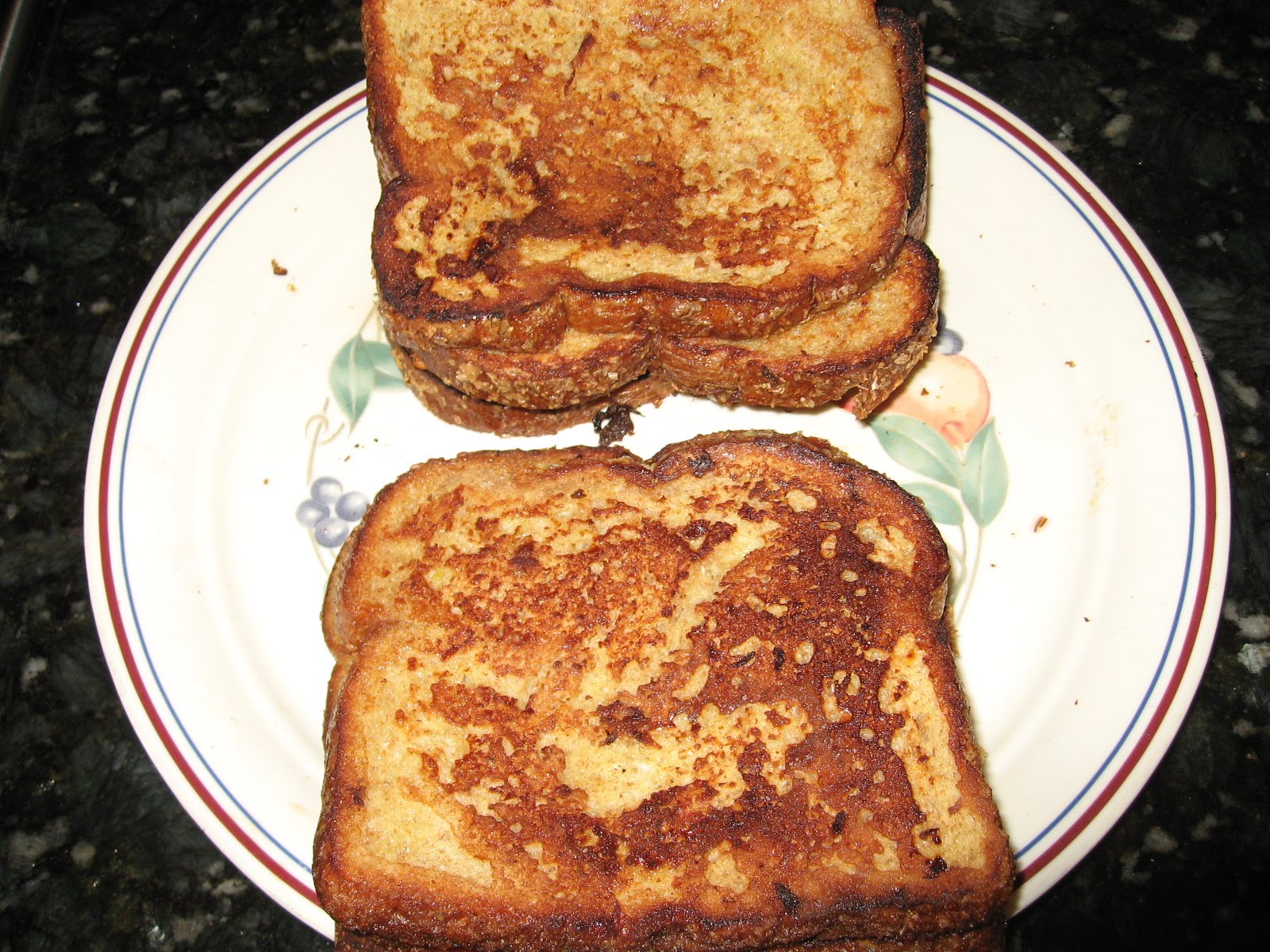
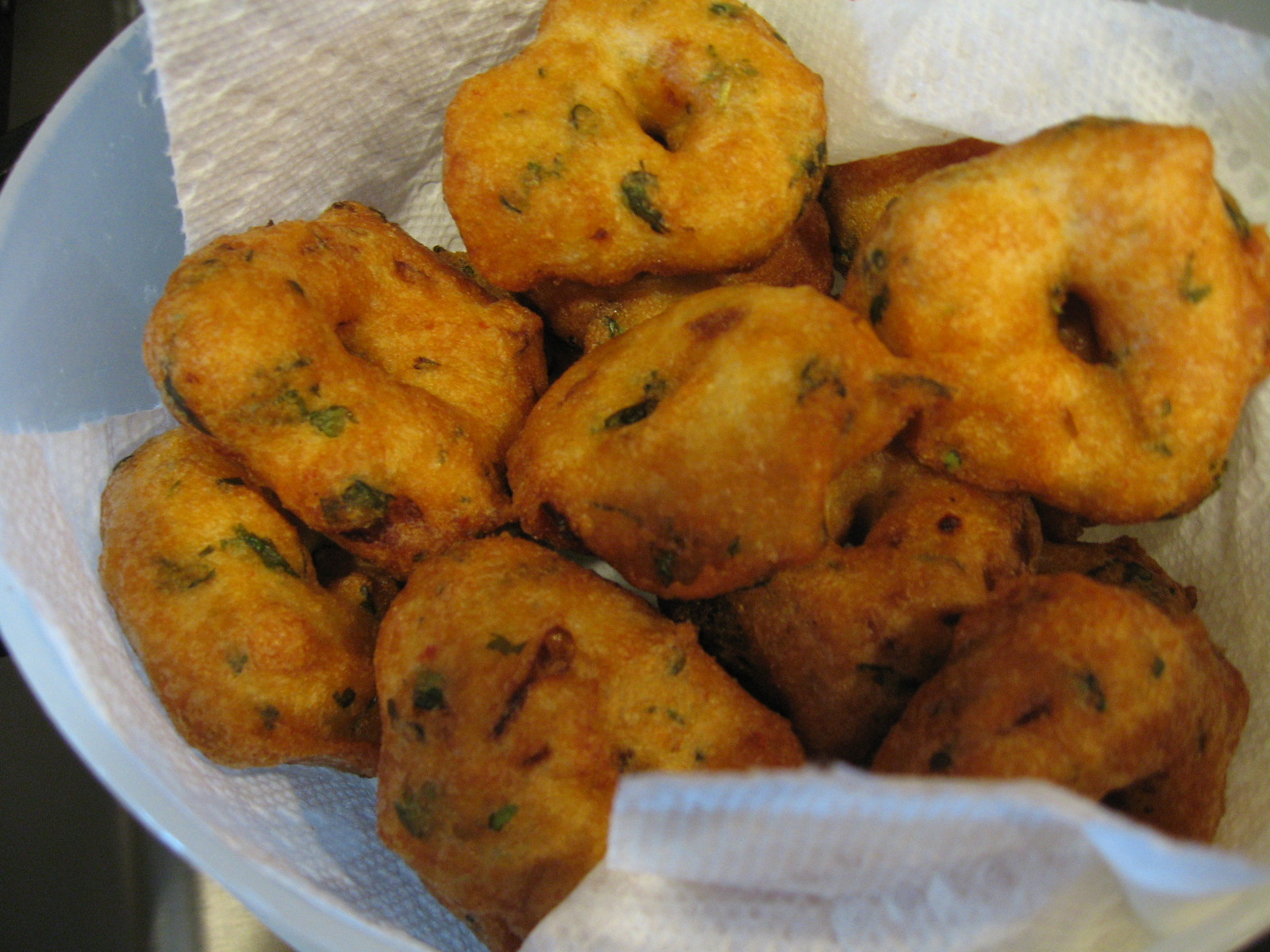









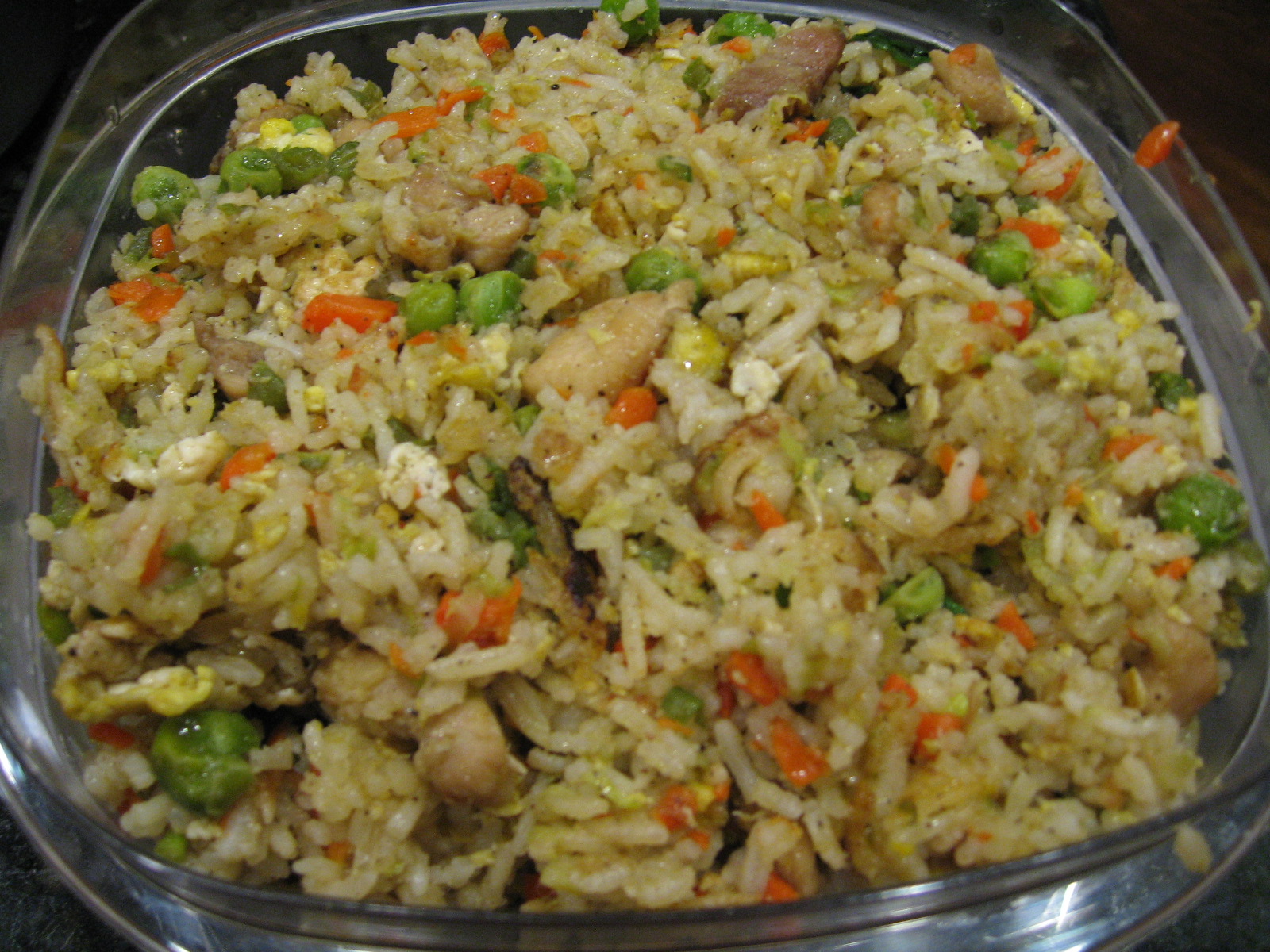



.jpg)








